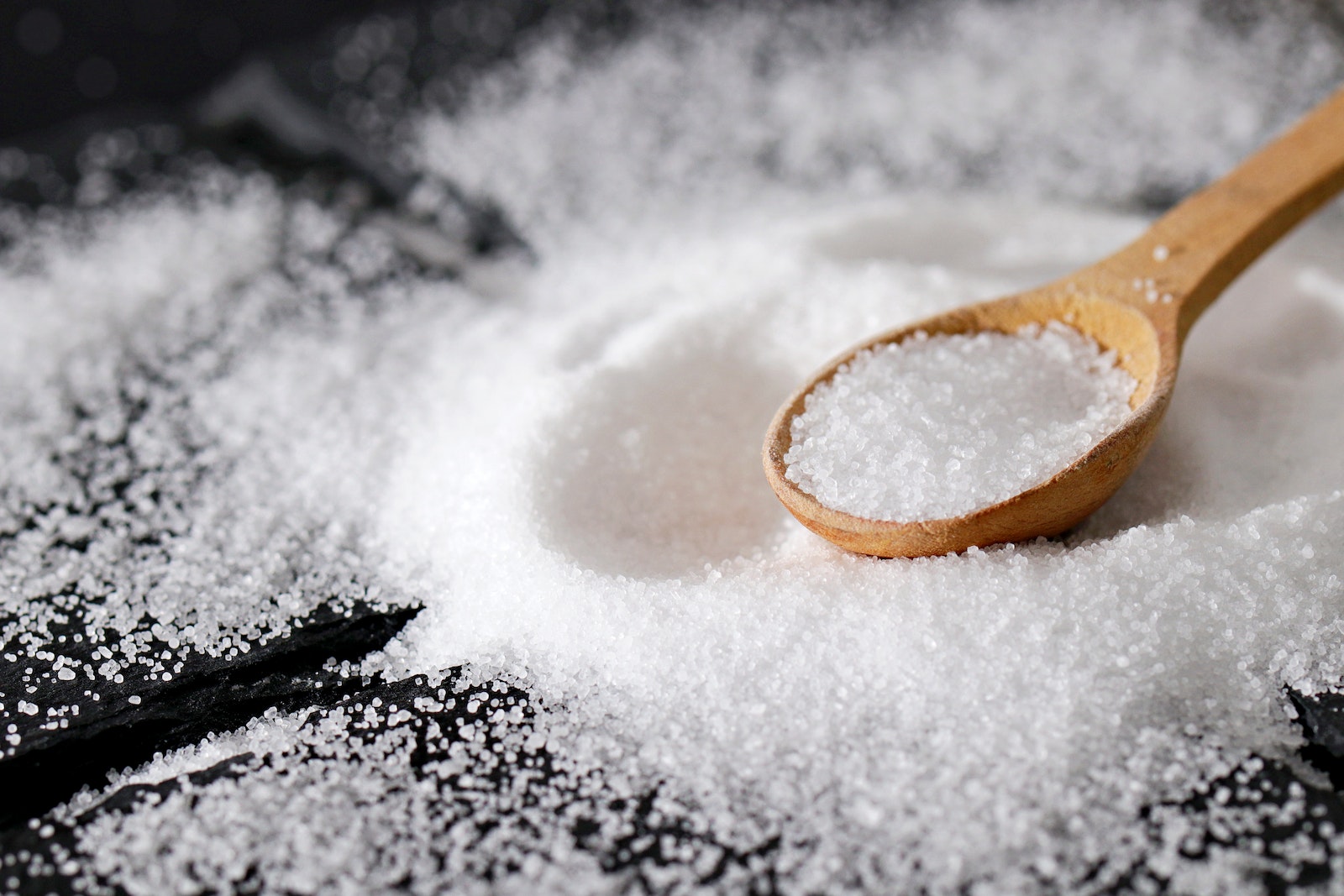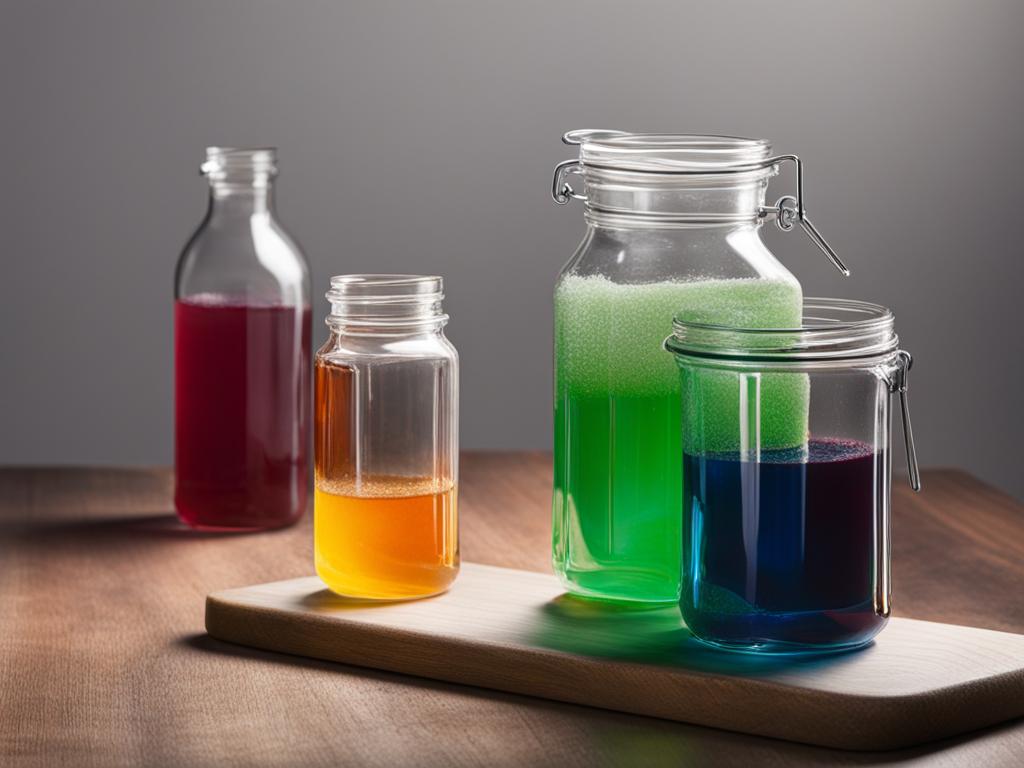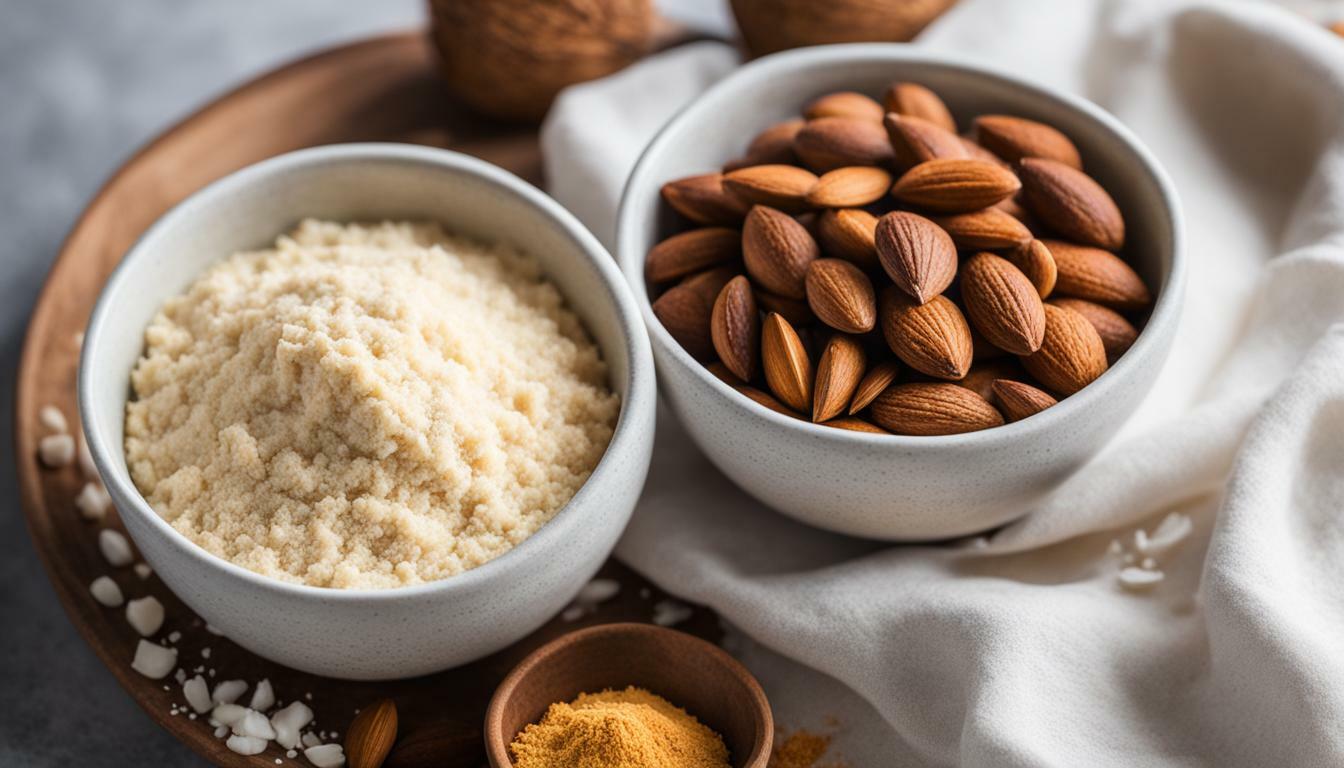A Quick Peek into the World of Salts
Pour out some salt on your palm. Take a close look.
This seemingly humble, unassuming substance is more than meets the eye. It’s more than just a fine white dust that makes our food palatable.
Salt, in its multifarious forms, carries the story of humanity’s progress – from our early ancestors preserving food to modern chefs creating culinary masterpieces. Salt is omnipresent, not just in our kitchens but also in our language and culture.
Terms like ‘worth his salt’, ‘take it with a grain of salt’ bear testimony to this omnipresence. Moreover, it finds its place across various industries – food preservation to de-icing roads, chemistry labs to luxury spas.
The Tale of Two Titans: Sea Salt and Table Salt
In the vast family of salts, we find two main characters that stand out – Sea Salt and Table Salt. They’re like two siblings born in different homes but united by their core element – Sodium Chloride (NaCl). Each has their unique attributes and roles to play in our kitchens and on our tables.
Sea Salt plays the role of an adventurous globetrotter who takes birth from evaporating seawater under sun and wind’s care. It carries within its crystals whispers from across the globe – Mediterranean warmth or Pacific chill.
On the other hand, Table Salt is like a steady homebody who comes from under the ground or mountains’ heart through mining or solution mining processes. More often than not, when you reach out for that glass shaker on your table while dining out or in your kitchen while cooking up a meal, you are meeting either one member from this incredible duo – sea salt or table salt.
Understanding the Basics: What’s in a Name?
A Pinch of Sea Salt: Where Ocean Meets Palate
Sea salt, as its name suggests, is produced through the evaporation of seawater. It is an artisanal food product harnessed through a dance with nature involving only the sun, sea, and wind. In regions where climatic conditions are ideal – think balmy weather and steady winds – seawater is channeled into large shallow ponds and left to evaporate naturally.
The resultant salt crystals are then hand-harvested meticulously, yielding a product that carries whispers of its marine origin. Sea salt has been integral to human civilization for millennia.
Historical accounts reveal its use in preserving food, tanning hides and even as a form of currency in some cultures. Today, it enjoys status as a gourmet item in culinary circles due to its texture and complex flavor profile influenced by trace minerals found in different marine waters.
Table Salt: The Unassuming Hero on Your Dinner Table
Table salt or standard cooking salt emerges from either underground mines or evaporated sea water in certain parts of the world. Rock salt deposits buried deep within the earth are extracted through mining methods reminiscent of coal extraction techniques; enormous machines burrow into vast subterranean caverns chipping away at dense walls of crystalized sodium chloride.
This raw rock salt undergoes rigorous processing to remove impurities and other minerals until what remains is almost pure sodium chloride. Sitting inconspicuously on your kitchen table lies this humble hero that has played an underrated part in our daily life for centuries.
From adding just the right zing to your meals to preserving food before refrigeration came into existence; from being an essential part of religious ceremonies across cultures to serving as a crucial ingredient in countless industrial applications; table salt’s role extends far beyond mere seasoning. Its omnipresence in our diets may make it easy to overlook, but its importance in the annals of human history and modern living is undeniable.
Spotting the Difference: More Than Just a Grain of Salt
The Tale of Two Textures: Coarse vs Fine Grains
The first obvious difference to note between sea salt and table salt is their physical appearance, specifically, their grain sizes. Sea salt tends to have a coarser texture with larger, irregular grains due to its natural evaporation process which leaves behind chunky crystals.
This characteristic makes it visually appealing and adds a distinctive crunch when added to dishes. On the other hand, table salt is usually milled down to create smaller, uniformly shaped particles.
This finely ground texture ensures that it can easily dissolve in recipes or be evenly distributed when sprinkled over food. It’s no wonder that this consistent grain size has made table salt a staple in shakers and kitchens worldwide.
A Palette of Salts: Why Some Salts Are Not Just White
Believe it or not, not all salts come solely in stark white! The color of sea salts can range dramatically depending on where they are harvested and what minerals they contain. For instance, Pink Himalayan sea salt owes its rosy hue to iron oxide (rust), while black sea salt gets its dark color from activated charcoal or volcanic lava.
In contrast, table salt is routinely stripped of any trace minerals during processing which results in its typical white coloration. Additionally, anti-caking agents are frequently added to prevent clumping and maintain its free-flowing nature – another factor contributing towards its unvarying whiteness.
Taste Test – Can You Really Tell Them Apart?
Arguably the most provocative aspect comes down to taste. Some gourmands claim that the flavor variances between these two types of salts are night and day whereas others insist they cannot discern any distinct differences.
Sea salts tend to have a more complex flavor profile due to the various trace minerals they retain post-evaporation. Depending upon where the sea salt is sourced, it can contain subtle notes of sweetness, bitterness or even umami!
Yes, you read that right – salt doesn’t always just taste salty! Conversely, table salt offers a straightforward and consistent salty punch every time.
Its simple and predictable flavor could be attributed to its pure sodium chloride composition. While this might not seem as exciting as its sea-salted counterpart on paper, it makes table salt an extremely reliable seasoning in cooking and baking alike.
Nutritional Nuances: Is One Healthier Than the Other?
Mining for Minerals: A Comparative Analysis
When it comes to the nutrient profile, both sea salt and table salt contain minute amounts of minerals that are beneficial for human health. But do not be precipitous in making judgements — let’s delve into this further. Table salt is primarily composed of sodium chloride, with an approximate 97% to 99% purity.
Any remaining content comprises trace minerals like potassium, magnesium, and calcium which unfortunately often get overlooked due to their minute presence. Sea salt’s composition, on the other hand, is quite the cornucopia.
It contains a lower percentage of sodium chloride— slightly above 90% — leading some to believe it’s less ‘salty’. The rest is a medley of trace minerals dependent on its oceanic origin, giving each variety its unique color and flavor.
You’ll find traces of iron, zinc, manganese and even copper. However alluring this might seem though, remember these quantities are so small they hardly make a significant impact on your daily mineral intake.
Shedding Light on Iodine: Busting Myths
Next up in our analysis is iodine – an essential micronutrient that plays a critical role in maintaining normal thyroid function and supporting brain development during pregnancy and infancy. This has been one contentious point in the sea vs table salt debate with numerous myths doing rounds.
Table salt typically takes center stage here because it’s usually fortified with iodine through a process called iodization which was introduced back in the early 20th century as a public health measure to combat iodine deficiency disorders. Each grain carries around 45 micrograms of iodine – providing approximately 30% of your recommended daily intake.
Sea salt aficionados often tout its natural iodine content but it’s time to put this myth to rest. While the ocean is indeed a natural source of iodine, sea salt does not contain enough to cover your daily requirements.
In fact, it only contains about 0.3 micrograms per gram, which is less than 1% of your daily requirement! So if you’re relying solely on sea salt for your iodine intake – think again.
Culinary Corner: When to Use Which Salt?
Sea Salt as a Gem in Gourmet Cooking
The allure of sea salt is not just restricted to its aesthetic appeal or mineral composition, it’s the intriguing role it plays in gourmet cooking that truly sets it apart. Sea salt’s coarse texture and larger crystals make it a perfect finishing salt.
It’s like the final brush stroke on an artist’s canvas, adding that desired crunch and burst of flavor to foods. Dishes such as oven-roasted vegetables, grilled steaks, or even caramel-based desserts are elevated with just a sprinkle of sea salt right before serving.
Consider for a moment Fleur de Sel – “Flower of Salt” in French. This top-tier sea salt is hand-harvested from the surface of evaporation ponds, resulting in delicate flaky crystals.
It is an essential ingredient for French gastronomy and widely lauded by chefs worldwide for its exquisite flavor profile and textural contrast. A mere dusting over buttery roasted chicken or dark chocolate truffles amplifies their flavors immensely.
Table Salt: The Everyday Hero in Cooking and Baking
Table salt might lack the cachet that sea salt enjoys among gourmands, but its importance in everyday cooking cannot be overstated. It has fine granules that distribute evenly, making it ideal for seasoning during the cooking process rather than at the end like sea salt. Whether you’re boiling pasta or sautéing vegetables, table salt ensures consistent flavor throughout your dish.
Moreover, table salt truly shines when it comes to baking—a realm where precision is paramount. Since granulated table salts easily dissolve and disperse evenly, they’re perfect for cookie doughs or cake batters where you need uniform salinity without visible granules interfering with your recipe’s texture.
Think about your favorite chocolate chip cookies or a fluffy vanilla cake. The salt subtly enhances the sweetness, creating that irresistible sweet-salty balance that keeps you coming back for another bite.
Environmental Impact: The Hidden Cost of Salt Production
The Footprints in the Sand: Tracing Sea Salt’s Ecological Impact
The production of sea salt, on one hand, may seem like an eco-friendly process as it harnesses the natural elements – sun and wind – for evaporation. However, the larger picture isn’t quite as green. The creation of salt pans used to harvest sea salt can lead to habitat destruction and disruption in coastal ecosystems.
These man-made structures could potentially modify water flows leading to erosion or flooding, thereby affecting natural habitats. Furthermore, an important but often overlooked element is the impact on marine wildlife.
Certain methods of sea salt harvesting may harm aquatic lifeforms. For example, some techniques involve trapping a body of seawater in shallow ponds or marshes which eventually evaporates leaving behind salt – during this process fish and other small marine organisms can get trapped and perish.
Mining Matters : Unearthing Table Salt’s Environmental Repercussions
As for table salt, it’s usually obtained from rock salt mines or by evaporating brine from wells drilled into underground salines reservoirs. Mining practices can cause groundwater pollution due to chemical leaks and spills during extraction process. Large-scale mining operations also lead to land degradation and loss of biodiversity as vast areas are cleared for mining facilities.
The energy consumption associated with table-salt processing is another significant environmental concern. It involves multistep processes such as drilling, blasting, crushing and washing all requiring heavy machinery which consume large amounts of energy leading to increased carbon footprint compared with the relatively passive method of harvesting sea salt where solar heat does most of the work.
Conclusion: So Which One Should You Pass at Dinner?
The Verdict: Unraveling the Salty Saga
In the end, the choice between sea salt and table salt is largely a matter of personal preference. Both offer essential sodium and chloride ions that your body needs. Sea salt, derived from evaporated seawater, typically has a unique flavor palette due to its mineral composition that varies depending upon its source water.
On the other hand, table salt – sourced from underground deposits – offers a consistent taste experience. The characteristics of sea salt such as coarse texture and distinctive color can add a different culinary dimension to your dishes.
It often shines in certain recipes where its unique qualities can be highlighted. Table salt, conversely, is often preferred for everyday cooking and baking where uniformity of grain size greatly matters.
The Last Grain: Looking Beyond Taste
We’ve also examined how iodine content shouldn’t necessarily be a deciding factor since most populations have access to this vital nutrient through various dietary sources outside of just table salt. Bringing health into consideration, both salts share equal grounds as they contain similar amounts of sodium. The environmental aspect presents another dimension to consider when choosing your salt type.
Sea salt production does inadvertently affect marine life but on the flip side, mining table salts isn’t without ecological implications either. While the journey through our analysis has been intriguing indeed; it leads us back to where we started – at a point of balance and personal preference.
Let’s remember that no matter which you prefer on your dinner plate tonight – sea or table – each contributes its own irreplaceable flavor notes in our culinary symphony! Here’s to spicing up life with just the right kind of ‘saltiness’!
 Skip to main content
Skip to main content


